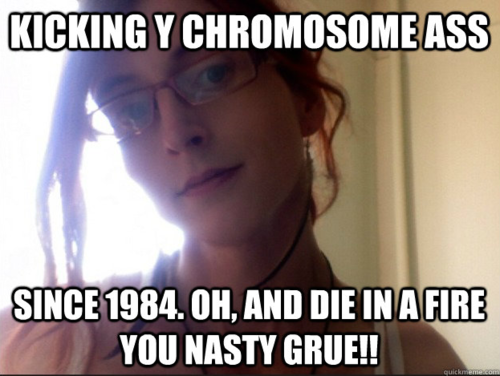A few weeks ago, a latina trans woman named Lorena Escalera died in an apartment fire at her home in Brooklyn.
The manner in which the New York Times reported her death demonstrated an egregious lack of respect for the deceased, and equally disturbing lack of professionalism on the part of the reporter. Lorena, in this article, was only “called” Lorena. Slut-shaming hints were given as to the number of men she allowed into her apartment. Possibility of foul-play or negligence on the part of the two men who were in the apartment at the time but left her there, somehow surviving while she did not, was hinted at but quickly brushed aside in favour of several hundred printed words speculating on the nature of Lorena’s sexuality, gender, identity… the legitimacy of each, all with the constant thematic tug in the direction of finding this person just another one of the big city’s fascinating “weirdos”, her death simply providing the circumstances where she’d no longer be able to object to be treated like a Coney Island exhibit. Could no longer correct the speculations her neighbours made on her history and character, presented as being somehow legitimate content for journalism.
Notably, the article printed assertions about Lorena’s medical history. Vague wonderings about what procedures she had or had not done. One of the neighbours asserts in the article that she’d had her lower ribs removed to help grant her a more “hourglass” figure (I have never, ever, ever heard of a real life trans woman undergoing such a procedure, much less being afforded and pursued by an impoverished woman of colour living in a cheap, shoddily wired Brooklyn apartment building who may have been a sex worker. Was Lorena even able to afford SRS?). Would a report on the death of a cis woman ever include casual musings on her medical history from uninformed neighbours? Would it include irrelevant details of her medical history at all? “Ms. Crowne, who’d had an ovarian cyst removed three years prior, drowned today at Ritter’s Beach.”
And even that level of unprofessional conduct would be analogous to this only if we’re either naive or absurdly generous enough to grant the neighbours’ speculations on her medical history any credibility. Do you recall the now thoroughly debunked urban myths claiming Marilyn Manson had undergone such a procedure for the purposes of autofellatio? It’s appallingly unprofessional that the journalist would print, as though credible and authoritative, without seeking actual confirmation, what is most likely simply a product of transphobic imaginations desperately trying to grab onto some scenario that could account for finding a trans woman, a “man”, beautiful and sexually attractive. “Such beauty,” the transphobe imagines, “must be artificial. The product of a surgeon’s craft. It cannot be ‘his’ own. It cannot be natural. My nice, normal heterosexual desires must have been deceived by a fancy, technological illusion”. These are the same neighbours, remember, who later stated that she was attractive “for a man”.
(I’ll leave well alone the deeper mythic resonances tying the removal of a man’s ribs to the “creation” of a woman)
I had intended to write about this, but extensive commentary emerged in the trans (and, encouragingly, LGBTQ) blogosphere very shortly afterwards. But what I saw in that commentary filled me with renewed anger. I saw those championing for the New York Times to be more respectful of the deceased engaging in equal levels of such disrespect, albeit with different motives. While the New York Times were simply trying to sell papers, these trans people were attempting to simply sell ego, and an exaggerated image of their own opression, exploiting deceased trans women of colour to do so. [Read more…]


